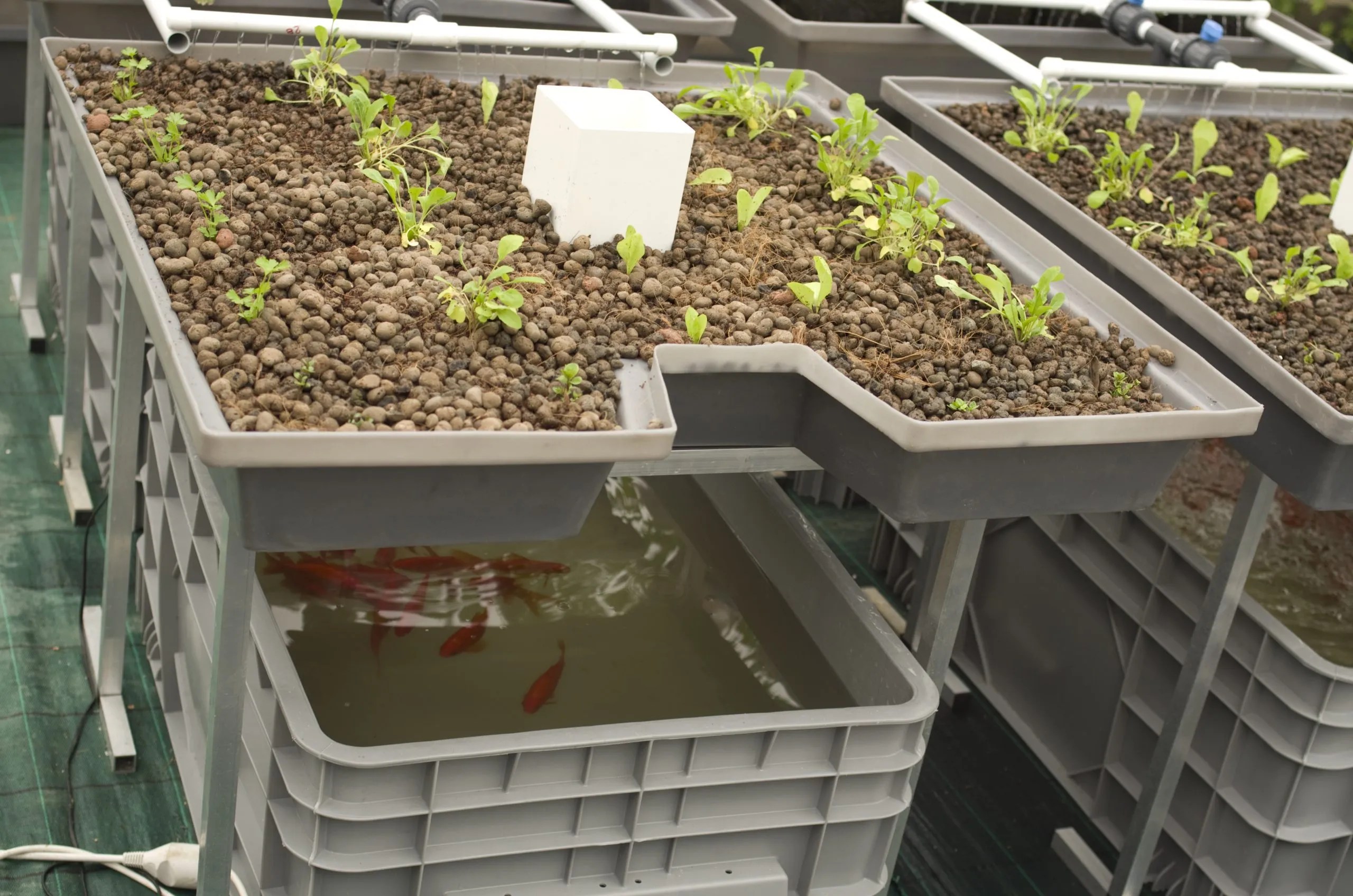/GettyImages-142873284-7afec7706c2a4997841bde2792c7ff6b.jpg) www.treehugger.com
www.treehugger.com Opening: Exploring the Wonders of DIY Aquaponics
Aquaponics, the symbiotic blend of aquaculture (raising aquatic animals) and hydroponics (growing plants without soil), offers a sustainable and efficient way to produce both food and fish. Building your own aquaponics system might seem daunting, but with the right guidance, it can be a rewarding and educational experience. This step-by-step guide will walk you through creating a simple yet effective DIY aquaponics system that you can adapt to your space and needs. Let's dive in!
Step 1: Planning Your System
Before you start gathering materials, it's crucial to plan your system. Consider the following factors: System Size: How much space do you have available? Start small, especially if you're a beginner. A 50-gallon fish tank and a similarly sized grow bed are a good starting point. Type of System: There are several aquaponics systems, but a simple media bed system is ideal for beginners. This involves filling a grow bed with gravel or clay pebbles. Fish and Plant Choices: Research compatible fish and plant species. Tilapia and trout are popular fish choices, while lettuce, herbs, and leafy greens thrive in aquaponic systems. Ensure both can withstand the temperatures and Ph levels you are using. Location: Choose a location that receives adequate sunlight (at least 6 hours per day) or be prepared to supplement with grow lights. Make sure the location can withstand the weight of the system and is accessible for maintenance.
Step 2: Gathering Your Materials
Now that you have a plan, it's time to collect the necessary materials: Fish Tank: A food-grade plastic tank is preferred. Size depends on your planning from step one. Grow Bed: A container similar to the fish tank, but shallower. Ensure it has drainage holes. Water Pump: A submersible water pump to circulate water from the fish tank to the grow bed. Choose a pump with a flow rate appropriate for your system size. Air Pump and Air Stone: To provide oxygen to the fish. Growing Media: Clay pebbles or gravel. Rinse thoroughly before use. Plumbing: Tubing to connect the fish tank, pump, and grow bed. Fittings to secure the tubing. A siphon to drain the grow bed. Fish and Plants: After the system cycles.
Step 3: Building the System
Follow these steps to assemble your aquaponics system: Set Up the Fish Tank: Place the fish tank in its designated location. Set Up the Grow Bed: Position the grow bed above the fish tank, allowing gravity to return the water. You might need a stand or support structure. Connect the Plumbing: Connect the water pump to tubing. Run the tubing from the pump in the fish tank to the grow bed. Install a siphon on the grow bed to drain water back into the fish tank. Fill the Grow Bed: Fill the grow bed with your chosen growing media (clay pebbles or gravel). Add Water: Fill the fish tank and grow bed with water. Dechlorinate the water to make it safe for fish. Install Air Pump: Place the air stone in the fish tank and connect it to the air pump.
Step 4: Cycling the System
Before adding fish, you need to cycle the system to establish a beneficial bacteria colony: Add Ammonia: Introduce a source of ammonia (fish food or pure ammonia) to the fish tank. Monitor Water Parameters: Test the water regularly for ammonia, nitrite, and nitrate levels. The goal is to establish a nitrogen cycle where ammonia is converted to nitrite and then to nitrate, which plants can use as nutrients. Wait: This process can take several weeks. Once ammonia and nitrite levels drop to zero and nitrate levels are present, the system is cycled.
Step 5: Adding Fish and Plants
Now that the system is cycled, you can introduce fish and plants: Acclimatize Fish: Slowly introduce the fish to the tank water to avoid shocking them. Float the bag in the tank for about 30 minutes to equalize temperature. Plant Seedlings: Plant seedlings in the grow bed, ensuring the roots are well-supported by the growing media. Monitor and Maintain: Regularly monitor water parameters, add nutrients if needed, and remove any dead leaves or debris. Feed the fish a balanced diet.
Conclusion: Enjoying Your Aquaponics System
Congratulations! You've successfully built your own DIY aquaponics system. With proper maintenance and care, your system will provide you with fresh produce and healthy fish. Remember to research best practices for your chosen fish and plant species, and don't be afraid to experiment and learn as you go. Aquaponics is a continuously evolving field, so embrace the journey and enjoy the fruits (and fish!) of your labor.
Aquaponics-what Is Aquaponics And How Does It Work?
 agromoris.com
agromoris.com 20 Best Plants For Aquaponics
/GettyImages-142873284-7afec7706c2a4997841bde2792c7ff6b.jpg) www.treehugger.com
www.treehugger.com Component Of Aquaponics Systems
 www.aquaponicsforbeginners.com
www.aquaponicsforbeginners.com